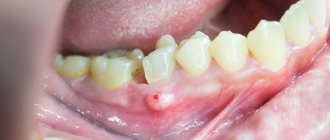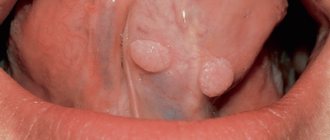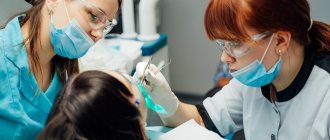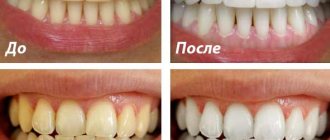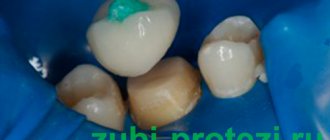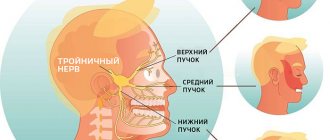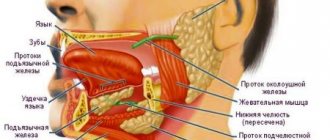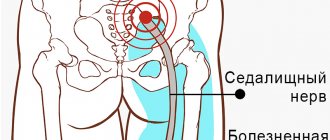Many people are familiar with the phenomenon of gumboil - when the cheek next to a sore tooth swells literally before our eyes and painkillers do not relieve acute pain. This is the periosteum of the tooth becoming inflamed, or, as doctors say, odontogenic periostitis of the jaws has developed. This disease in itself is a complication of dental problems (periodontitis, periodontitis), but in the absence of proper treatment, such inflammation can also cause the development of even more serious complications.
Why can the periosteum of a tooth become inflamed?
The most common is odontogenic periostitis of the jaws, that is, an inflammatory process provoked by diseases of the teeth or periodontal tissues. Deep caries, pulpitis, periodontitis (inflammatory process at the apex of the tooth root), periodontitis - all these diseases, if not treated in time, lead to the appearance of gumboil. Also, one of the reasons for the development of the inflammatory process may be alveolitis - inflammation of the tooth socket, which in some cases occurs after tooth extraction. Inflammation of the periosteum after tooth extraction usually develops in those patients who do not rush to see a dentist when the first signs of complications appear in the postoperative period.
Much less common is toxic periostitis, caused by infection through the blood or lymph (usually due to some general infectious disease). The disease can also be caused by injuries to the jaw bone or surrounding soft tissue.
Biomechanics of injury
The main difference between running and walking is the absence of a double support phase (when both legs are on the ground at the same time), as a result of which the body weight falls on one limb when landing, which leads to 1) a sharp increase in the impact load on the leg; 2) the need to increase the activity of the foot stabilizer muscles. That is, muscles that provide not so much power (like the gastrocnemius and soleus muscles), but rather the correct position of the landing and pushing off foot, adaptation to uneven surfaces.
As a result of increased load, the stabilizer muscles become clogged and shortened, just like any muscle after training. And here the second mechanism that causes injury is activated - the distribution of the shock load.
When we land on our foot, the muscles, ligaments and bones absorb and dissipate the shock. If the muscle is elastic and in normal tone, then most of the blow is absorbed by the lengthening of its abdomen (central part), and the tendons and places of attachment to the bone take on the rest of the blow. If the muscles are shortened and not elastic, much more shock load falls on the attachment site.
periosteum (a dense layer of connective tissue that covers the entire bone). When receiving a blow, the muscles seem to pull the periosteum, which leads to its microtrauma and inflammation.
Structural disorders of the foot can also increase the shock load on the lower leg muscles, such as an excessively high arch of the foot (Figure 3), which reduces its shock-absorbing ability, and flat-valgus feet, which often lead to hyperpronation (excessive roll of the ankle joint and the foot inwards when landing ) and, consequently, additional load on the tibialis posterior muscle.
Causes of tire splint:
- Weak and clogged foot stabilizer muscles
- High impact load.
High impact loads may be caused by:
- overweight;
- structural features of the foot - hyperpronation, high rigid arch of the foot;
- shoes with low cushioning;
- hard surface for running;
- hard contact with the surface (excessively high tension of the feet upon contact);
- acceleration or running down an inclined surface;
- running on uneven surfaces.
Moreover, you can clog up your muscles one day, for example, when training in the park, and damage the periosteum during the next workout when running on your usual hard surface, simply by shortening the muscles.
Inflammation of the periosteum of the tooth: symptoms
Depending on the form and localization of the process, symptoms may be as follows:
- General symptoms: severe pain in the area of inflammation, swelling, noticeable swelling, discoloration of the gums, mobility of the dental unit, which served as a source of spread of the pathological process. Depending on the location of the source of infection, facial swelling will look different: when inflammation develops near the front teeth, the upper lip or middle third of the face swells; when inflammation occurs near the chewing teeth, the cheek, sometimes the lower eyelid, and parotid area swell. You can evaluate what different types of edema look like during inflammation of the periosteum of the tooth using a photo.
- Acute serous periostitis of the lower or upper jaw is accompanied by severe redness of the mucous membranes, rapid development of edema, and increased body temperature. The general symptoms of this form of inflammation are especially pronounced.
- In the acute purulent form of the disease, severe sharp pain is characteristic, and the pain subsides under the influence of cold and becomes stronger when exposed to heat. Sleep and appetite are disturbed, the temperature rises noticeably, and the patient’s general condition worsens. Pain in most cases radiates along the branches of the corresponding nerves. For example, acute purulent periostitis of the lower jaw can make itself felt by pain in the neck, chin, ear and temporomandibular joint. Purulent periostitis of the upper jaw most often provokes pain in the orbital area, temporal bone, and ear.
- The chronic form of the disease is quite rare, and chronic periostitis of the lower jaw usually develops. The symptoms are mild, the swelling is almost unnoticeable and can gradually develop over a very long time. Pain and discomfort appear from time to time (periods of exacerbation).
At the initial stage of the inflammatory process, it usually has a serous form, later, without treatment, it becomes purulent. With a large accumulation of pus, the formed abscess can burst with the flow of purulent contents into the oral cavity. At the same time, the swelling decreases and the pain subsides. In this case, some patients calm down, believing that the problem has been solved, and are in no hurry to see a dentist. In fact, this is only temporary relief, since the pathological process can resume at any minute.
Prevention and relapse prevention
For preventive purposes, it is necessary to strengthen the stabilizing muscles of the foot with non-impact loading.
– If you ride the subway, you can hold the handrail, slightly raise one leg and ride 1-2 stations on one leg and another 1-2 stations on the other leg. It is important to start the exercise after the train has accelerated and do not raise the second leg high from the floor so as not to fall during braking. The metro is generally an excellent trainer for stabilizer muscles.
– You can train the muscles by performing amplitude rotations of the ankle clockwise and counterclockwise with a weight in the area of the instep weighing from 500g to 1kg 40 times in each direction, keeping the foot suspended. If you do such exercises every day for 2 months, this will greatly strengthen your ankle and prevent not only inflammation of the periosteum, but also a number of other running injuries.
– Special balancing pillows are also used, exercises on which for 5-10 minutes a day give results within 3-4 weeks.
Another part of prevention is good stretching of the ankle and stabilizer muscles, as well as massaging them after high loads.
Execution: stand on the edge of a step or curb, remaining on the support, with the inside of your foot lower your heel as far as possible down and out. When performing the stretch, bend your knee slightly to increase the stretch in your calf muscles and reduce strain in your hamstrings and calf muscles. Hold the position for 40 seconds. Can be repeated 5-7 times.
For prevention and treatment, shoes with protection against overpronation are also used (selected by specialists, preferably using video recording on a treadmill) and/or special running individual insoles.
Attention! Do not combine insoles and specialized shoes without the advice of a specialist, since the anti-overpronation mechanisms built into the insole and the sneaker, when superimposed on each other, can have the opposite effect, completely extinguish pronation, or even put the foot in the opposite position!
Periostitis in children
In children, the inflammatory process usually develops as a result of untreated caries of baby teeth, infectious diseases or injuries. Due to the peculiarities of the physiology and anatomy of the child’s body, as well as due to the immaturity of the child’s immune system, the pathology develops quickly and rapidly, and the infection quickly spreads through the bloodstream and lymph flow, so multiple lesions can form.
Periostitis of the upper jaw in a child requires special attention, which, when localized in the palate, may not change facial features - swelling forms inside the oral cavity and can only be noticed by the characteristic convex swelling on the palate. The abscess gradually grows, capturing the mucous areas of the pharynx and tongue, which causes pain when swallowing and chewing. If a child develops symptoms such as fever, loss of appetite, or painful swallowing, it is imperative to check whether such a condition is caused by developing gumboil.
Causes of tire splint
- Weak and clogged foot stabilizer muscles;
- high impact load.
High impact loads may be caused by:
- overweight;
- structural features of the foot - hyperpronation, high rigid arch of the foot;
- shoes with low cushioning;
- hard surface for running;
- hard contact with the surface (excessively high tension of the feet upon contact);
- acceleration or running down an inclined surface;
- running on uneven surfaces.
Moreover, you can clog up your muscles one day, for example, during a workout in the park, and damage the periosteum during the next workout while running on your usual hard surface, simply by shortening the muscles.
Possible complications and diagnosis
If the disease is not treated properly, very serious complications soon develop: osteomyelitis (purulent inflammation of bone tissue, provoking its necrosis), phlegmon (a diffuse purulent process that affects nearby tissues and requires immediate surgical intervention), sepsis (a general infection of the body, often ending in the death of the patient ). Each of these conditions requires emergency medical care and long, painstaking treatment. Therefore, it is better not to let the situation lead to complications and contact a dentist at the first signs of an inflammatory process.
To establish an accurate diagnosis, the doctor will need to conduct a differential diagnosis using instrumental diagnostic methods (radiography, CT). This disease is similar in symptoms to acute periodontitis, acute inflammation of the salivary glands, lymphadenitis, and osteomyelitis. Therefore, in order to prescribe adequate treatment, it will be necessary to exclude these conditions and accurately determine the cause of the patient’s poor health.
Inflammation of the periosteum of the tooth: treatment
Periostitis of the lower and upper jaw requires almost the same treatment, despite some differences in symptoms and localization of lesions. Moreover, complex therapy will be required, which will quickly eliminate the infectious-inflammatory focus and prevent relapses:
- Surgery. Opening the purulent sac with removal of the contents and thorough cleaning of residual pus is a mandatory procedure in this case. The intervention is performed under local anesthesia. At the initial stage of the disease (with its serous form), it is possible to do without surgical intervention. In this case, the doctor carries out endodontic treatment (depulpation, cleaning and treatment of root canals, antibacterial therapy).
- Drug therapy. Prescribing antibacterial and anti-inflammatory drugs to eliminate inflammatory phenomena (swelling, hyperemia, fever, pain) and infection.
- Physiotherapeutic procedures. Iontophoresis, ultrasound or laser therapy, electrophoresis, paraffin therapy - all these procedures are usually aimed at resolving compactions formed as a result of the pathological process. As a rule, physiotherapy is used for chronic forms of the disease, but in some cases it can be used in the complex treatment of acute purulent forms.
Antibiotics for inflammation of the periosteum of the tooth are prescribed during the treatment process; they are necessary to eliminate the bacterial infection, which is one of the causes of the development of the purulent-inflammatory process. The doctor selects medications based on the severity of the disease, the general condition of the patient’s body and the possible presence of concomitant diseases. Along with antibiotics for periostitis of the jaw, antihistamines (antiallergic) are also prescribed as treatment, which can reduce the drug load on the immune system, as well as calcium supplements.
The success of treatment largely depends on the patient’s timely visit to the doctor and the effectiveness of the therapy itself. And if in the first case everything depends on the patient - his conscious attitude towards his own health, then in the second the success of treatment is completely determined by the qualifications and experience of the dentist to whom the patient turned. A competent specialist with extensive clinical experience will quickly and successfully cope with even such a complex disease, while an amateur can further aggravate the problem. Therefore, choosing a good specialist is important here - these are the specialists who work at the 32 Dent clinic. Our doctors have extensive experience in successfully treating any purulent-inflammatory diseases of the oral cavity, including periostitis.
Treatment of the disease
The therapeutic regimen is always selected on an individual basis. If the disease has recently developed, it is usually possible to manage with conservative methods. The patient is prescribed:
- anti-inflammatory;
- antibiotics;
- antiseptics.
Sanitation of the oral cavity is mandatory. If there are indications for removing destroyed units, they are pulled out and replaced with dental prostheses. Physiotherapy helps speed up the healing process.
In advanced cases, surgical treatment is performed. In this case, the treatment plan looks something like this:
- The doctor examines the condition of the mouth and determines the cause of the disease.
- A local anesthetic is injected into the affected area. As soon as it takes effect, an incision is made in the gum with the abscess.
- The opened lesion is cleaned of purulent exudate and washed. If necessary, install a drainage tube. It is necessary so that necrotic masses do not again begin to accumulate in the existing cavity.
- The doctor treats the tooth, if it is possible to save it. Fills the canals and installs a seal. If the unit cannot be cured because the roots are severely damaged, removal is carried out.
- The patient is prescribed antibiotics, painkillers, and anti-inflammatory drugs.
It is important that after treatment the patient comes for follow-up examinations. They are needed to prevent relapse of pathology and create optimal conditions for rapid regeneration.
How to treat inflammation of the periosteum of a tooth before visiting a doctor?
Self-medication for any purulent processes is very dangerous, so it is recommended to consult a dentist at the first symptoms of the disease. However, before visiting a doctor, the patient can alleviate his condition somewhat by applying cold to the cheek on the affected side and rinsing his mouth with an antiseptic solution at room temperature (chlorhexidine soda-saline solution, chamomile or sage decoctions). Here's what you absolutely can't do:
- Apply warm compresses and drink hot drinks.
- Apply any bandages yourself or use medications without a doctor’s prescription.
- It is better not to take analgesics before visiting the dentist.
- If you are undergoing surgery (opening an abscess), you should not take aspirin, since it changes the rheological properties of the blood and can cause bleeding.
